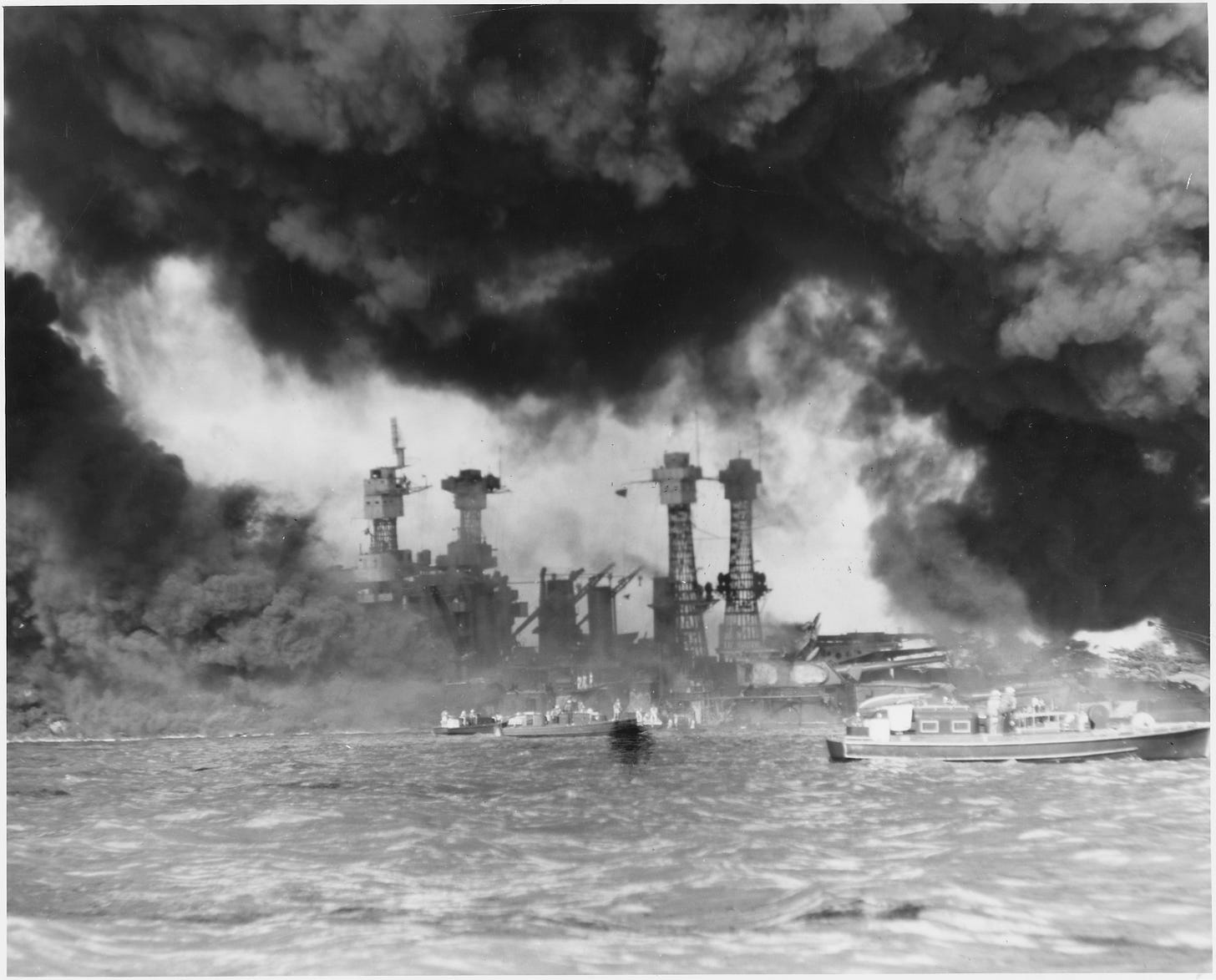Medal of Honor Monday: Pearl Harbor
Do you know about the 16 men who received Medals of Honor for their bravery that day?
During this week in 1941, the Japanese launch an attack on the United States naval base at Pearl Harbor. You already know the basics of the story, but do you know about the 16 men who received Medals of Honor for their bravery so long ago?
Remember: Those boys woke up that morning thinking that the United States was NOT at war. But they leapt into action when called upon to do so.
Some of the acts were relatively simple ones, like staying in a dangerous spot to hold a flashlight along an escape route. But each amounted to something greater: A selfless act made so that someone else might live.
Ensign Herbert Jones organized and led a party that was manually moving ammunition on USS California: The ship’s mechanical hoist wasn’t working. A bomb hit nearby, injuring him, but he refused to be evacuated. “Leave me alone! I am done for,” he said. “Get out of here before the magazines go off.”
On the same ship, Gunner Jackson Pharris risked his life to rescue shipmates from flooding compartments. They were unconscious and in danger of being submerged in oil. He did this while suffering from injuries so serious that he kept blacking out.
Radioman Thomas James Reeves refused to leave a burning passageway; he was intent on helping with the ammunition resupply effort. Machinist's Mate First Class Robert R. Scott was working in a flooded compartment that contained an air compressor. He made a fatal decision to stay: “This is my station and I will stay and give them air as long as the guns are going.”
On USS Nevada, Machinist Donald K. Ross was working in a forward dynamo room that was quickly filling with smoke, steam, and heat. He refused to leave, even though he was twice rendered blinded and unconscious. In the meantime, Chief Boatswain Edwin J. Hill was trying to get Nevada out of the port. He left the ship to cast off the lines, but swam back afterwards! He was killed as he struggled to let the anchors go.
Nearby, USS Oklahoma was about to capsize. Ensign Francis C. Flaherty and Seaman First Class James R. Ward both stayed in their positions, holding flashlights so others could escape. Neither Flaherty nor Ward made it out themselves.
USS Utah was also capsizing. Chief Watertender Peter Tomich gave his life when he refused to leave his post in the engineering plant. He wanted to make sure that the boilers were secure and that other personnel were able to get out.
The USS Arizona was ablaze, but Captain Franklin Van Valkenburgh and Rear Admiral Isaac Campbell Kidd stayed on the bridge until a direct hit cost them their lives. The senior surviving officer, Lt. Commander Samuel Glenn Fuqua, directed firefighting efforts and ensured that as many people as possible got off the ship. Unfortunately, USS Vestal was moored to that fiery ship! Commander Cassin Young was blown off Vestal by an explosion on Arizona. Nevertheless, he swam back to Vestal and got it unmoored and moved.
USS West Virginia’s Captain Mervyn S. Bennion was mortally wounded on the bridge of his ship. Lt. John Finn was at one Naval Air Station manning a machinegun in an exposed location. He had to be specifically ordered to get medical attention! He suffered through First Aid, then went right back to work.
The Japanese attacked another Naval Station at Midway later that same day. First Lt. George Cannon refused to be evacuated from his command post until he’d first taken care of others and reorganized his command post. The decision was fatal.
How awesome that so many men were so brave! How terrible that the attack was so massive that so much bravery was required.
Sources can be found on my website, here.




